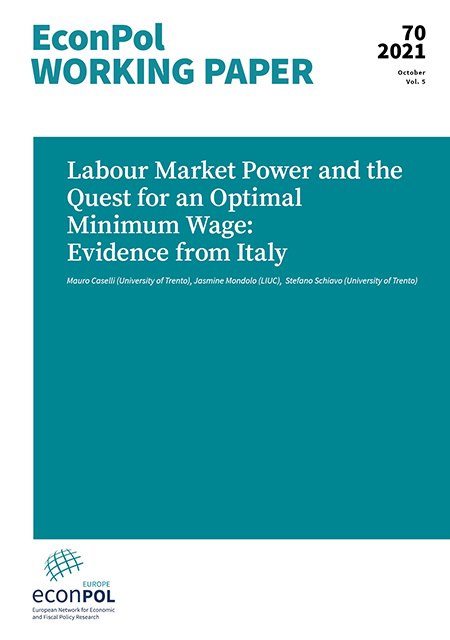Labour Market Power and the Quest for an Optimal Minimum Wage: Evidence from Italy
This paper investigates the recent trends in labor market power in Italy and assesses the impact of a potential minimum wage using a large sample of manufacturing firms. The authors show that, despite a general shift of labor market power from the employer to the workers, monopsony power is still widespread, especially in certain sectors and regions. The introduction of a minimum wage would be beneficial to the economy as it reduces the monopsony power of highly productive firms that pay low wages. However, it may also have a negative impact, since firms with low labor productivity may react by reducing the number of their employees or even by exiting the market. The optimal minimum wage, which minimizes the negative effects and maximizes the positive effects on the economy, ranges between EUR 8.25 and 9.65 per hour.
This study investigates the recent trends in labour market power in Italy and assess-es the impact of a potential minimum wage using a large sample of manufacturing firms. We show that, despite an average shift of labour market power from the own-ers to the workers, monopsony power is still widespread, especially in some sectors and regions. The introduction of a minimum wage would be beneficial to workers and the economy as it reduces the monopsony power of highly productive firms paying low wages; however, it may also have a negative impact, since firms with low wages and low labour productivity may react by reducing the number of their em-ployees or even by exiting the market. Finally, we defined that an optimal minimum wage, which minimises the negative effect and maximises the positive effect for the economy, ranges between 8.25 and 9.65 euro per hour.
Mauro Caselli, Jasmine Mondolo and Stefano Schiavo: “Labour Market Power and the Quest for an Optimal Minimum Wage: Evidence from Italy,” EconPol Working Paper 70, October 2021.
